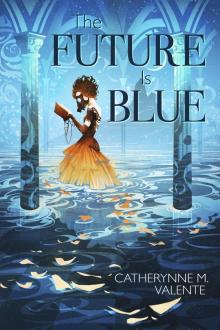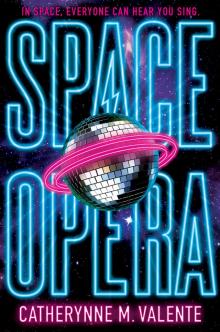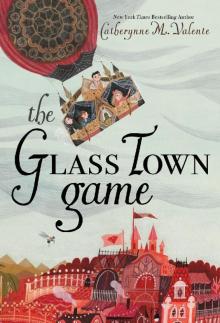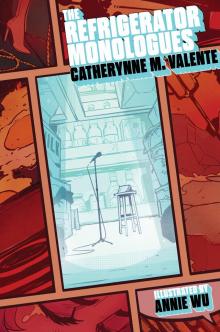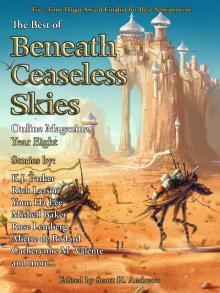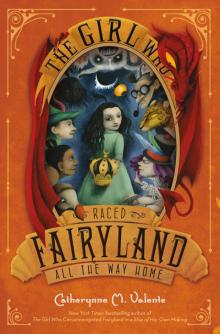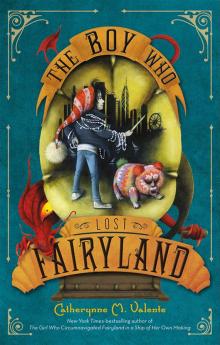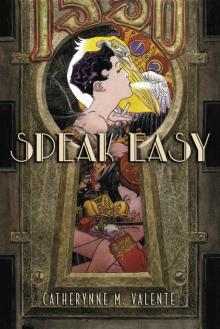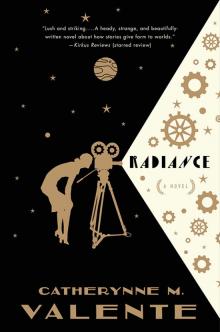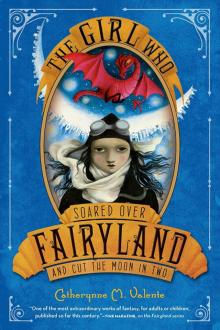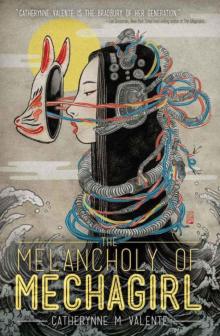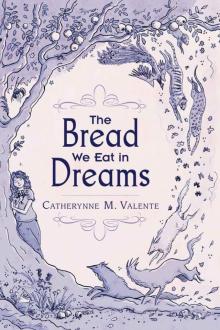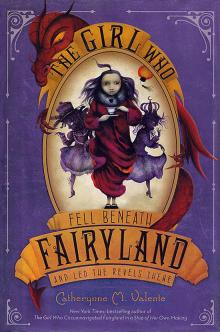


TV Development Guide, Page 3
Stephanie Varella
ternally, which means the network executives generate or come up
with ideas themselves. Then they pitch the idea (could even be
just a title) to a writer(s), who comes back with a more detailed
pitch on the idea. The network then decides which take they like
the best. This is definitely not how shows are developed for other
networks, but it is very similar to the way that feature (movie)
film development works. However, it is still possible and definite-
ly does occur where producers and/or writers bring in pitches
and/or completed ‘spec’ scripts for consideration.
A ‘spec’ script is a pilot script that a writer writes before being
commissioned, or paid, to write it. Writers write specs in order to
display their writing skills and their “voice.” It is a sample of
their writing. ( More on this in Act 2)
REALITY PROGRAMMING
When I started working in TV, there were not many reality shows.
However, in the last twenty years there has been a sea change in
!32
Act 1
the industry. Reality shows are quite prevalent and there are
probably more of them than any other format in today’s TV mar-
ketplace. ( More on “Formats” in Act 2)
They can be game shows ( American Idol, The Voice), docudramas
(Keeping up with the Kardashians, Housewives of…) and everything
in between ( Survivor, The Bachelor, etc.). There are even several
networks that produce only reality shows (HGTV, TLC, The Food
Network, TruTV).
Probably the best time in history to sell a reality show is right
now!
WHAT IS A REALITY TV SHOW?
A reality TV show is supposed to be a television show without a
script, but most of them are actually semi-scripted and manipulat-
ed. This changes the authenticity of the show because the produc-
ers are providing made-up scenarios for the cast to engage in.
This is different than scripted shows where the actors are acting
and reciting lines from a script.
On reality shows, the participants are not acting, they are being
themselves. The viewer watches and follows “real” people who
purportedly speak their truths. For this reason, I believe the most
important consideration in making a reality show is the casting.
Finding the right people is critical. They must be inherently inter-
esting and watchable.
The irony is that sometimes, especially if the acting is really good,
a scripted show can seem more real, or authentic, than a reality
show. This is due in part to the practice of manipulation on semi-
scripted reality shows. In the history of television, the lines be-
tween reality and scripted are more blurred than ever before.
In the early 1990s, reality shows were becoming more popular be-
cause it was considered less expensive programming for prime-
!33
Act 1
time. While at BRUCKHEIMER TV, I had the privilege of working
on ABC’s Profiles from the Front Lines and CBS’s The Amazing Race.
I experienced first-hand the development and production of these
very ambitious and unique reality shows.
The Amazing Race was a very fun experience for me starting with
the casting, where we met with many couples who were trying
out for the show. They had to go through meetings, tests and even
medical evaluations before being chosen. It was an important
process because we had to make sure they were physically and
mentally fit to race.
It was truly a wild ride working as an executive on Race. I was in
and out of each city literally within three days. I followed contes-
tants as they ran the race with the camera and sound crews run-
ning with them. Much of the time the crews were running back-
wards! There was very little eating, sleeping and showering. No
time for anything but the racing. Throughout the experience, I got
to see what people are truly made of, which really came to life in
the post-production of the show.
I worked on the first five seasons and it won an Emmy every year
for “Outstanding Reality Competition Program.” If I could have
chosen only one reality show to be on, it would have been Race…
but working on it was the next best thing!
HOW TO DEVELOP A REALITY SHOW
If you are interested in developing a reality TV show, one of the
first things you must figure out is what will be happening in each
episode? How will every season unfold? If you put your
thoughts and ideas down on paper, in detail in a ‘treatment’ form,
you can protect it by registering it with the WGA. (S ee Act 2 for
details on protecting your work)
The next step would be to research which production companies
are already producing similar shows. Then, call or email them.
!34
Act 1
They are always looking for new ideas, so it can’t hurt to start
with a phone call or email. Another way to present your idea is to
shoot a sizzle/proof of concept reel. For a reality show, the sizzle
reel is a shorter version, or part of an actual episode and can/
should include potential casting ideas. ( See "Sizzle Reels” in Act 2)
THE “BUSINESS” OF THE TV BUSINESS
As you can imagine, the business side of television is all about the
dollars and cents, which of course is extremely important. It is
always about the bottom line, profits and what makes sense finan-
cially. However, I will not spend a lot of time covering this topic
because, it is not my area of expertise. There are many books ded-
icated to the business side of television as well as people more
qualified to discuss this, like the entertainment attorneys. But I
will give you a basic understanding, which I believe is crucial for
working in TV.
In the previous section entitled, “The Players: Network Execu-
tives,” I explained how a network makes money from advertisers
by charging them for commercials. This is one way networks
make money. The way studios, either attached to a network
(sometimes called, ‘sister studio’) or independent, make money is
by owning and then selling produced and aired shows in syndica-
tion (re-runs) and internationally.
Studios can also become partners with another studio. As part-
ners they deficit finance the show together. By doing so, they split
in the rights to sell it domestically and internationally, then share
in the profits. One reason independent studios will partner with
network-owned (sister) studios is to have them (the network that
bought the show) more invested, emotionally and financially, in
the success of the series. That network will usually promote and
stay with the show longer when their sister studio is attached to it.
However, most studios would prefer to own the entire show and
not partner on it because then they would make all of the profit.
But, of course, that only happens when the show is successful. On
!35
Act 1
the other hand, having a partner would be a good thing if the
show fails because there is us
ually a significant amount of a finan-
cial loss. It’s the old adage, “Less risk-less reward, high risk-high
reward.”
In 2016:
ABC owned or co-owned 9 out of 10 new series.
CBS owned or co-owned all 10 of its new scripted series.
FOX fully-owned 9 out of 10 new series.
NBC owned or co-owned all but three new series, 9 out of 12.
In 2017:
ABC owned or co-owned pilot 7 out of 12 new series.
CBS owned or co-owned 6 out of 8 new series.
FOX fully-owned 11 of their new series.
NBC fully-owned 11 of their new series.
One of the reasons this model poses a problem is because in es-
sence it shuts out independents. In 1970, the FCC dealt with this
issue.
WHAT IS THE FCC AND ITS IMPACT ON TV?
The Federal Communications Commission (FCC) is an indepen-
dent agency of the United States government created to regulate
interstate communications by radio, television, wire, satellite and
cable. In 1970, it wanted to prevent the “Big Three” networks,
ABC, CBS, and NBC, from monopolizing all broadcasting so it
ruled that networks could not own any of the programming
(shows) that aired in prime time (from 8:00-10:00 p.m.). This was
a VERY BIG DEAL. It completely altered the relationship between
the networks and television producers, and created a huge oppor-
tunity for independent TV companies. Many shows, like The Mary
Tyler Moore Show and All in the Family, were made possible because
of this rule.
!36
Act 1
In the 1980s, these rules were relaxed because networks could not
maximize their profits. In the 1990s, the rules were repealed. All
this led us to where we are today with the networks owning most
of what they air. This effectively shuts out independents, but with
the rise of the streaming networks, the doors have opened yet
again for new, independently produced shows.
Nowadays, anyone with a camera and a computer can put a show
on the air (e.g., YouTube). However, the downside is that no one
is getting the mass audiences they got when there were only three
channels… and probably never will again.
WHAT’S THE DIFFERENCE BETWEEN DEVELOPING A
TV SERIES VS. A MOVIE?
It is important to understand that not every idea can be both. In
fact, most ideas lend themselves to be either a TV show or a
movie, usually not both. There are plenty of examples where TV
shows became movies and vice versa, but in general here’s what
to look for in TV shows vs. movies:
TV SHOWS
TV shows are about relationships. They are intimate and have
stories viewers can relate to. Whether watching them alone or
with others, and often at home, these are stories that connect to
contemporary experiences and issues that matter. Viewers be-
come invested in the characters and want to watch them either
week after week or 'binge watch.’ Stories can have either a longer
arc (‘serialized’), which is told over time/season(s), or they can be
franchised, which are episodic and told in one hour or less.
MOVIES
In general, movies are about a specific incident(s) or event that
shaped/changed a person’s life significantly. There is a very dis-
tinct beginning, middle and end that can be told in about two
!37
Act 1
hours. The audience must feel some satisfaction at the end of the
movie.
HYBRID
An example of a hybrid TV series and feature film is a ‘miniseries.’
Miniseries have the same elements of a movie, but because they
have more story or content that fits into a two-hour format, they
fall into the miniseries category. (More on Formats in Act 2)
*****
!38
Act 1
Questions To Consider
• Are you more of an “ideas” person or a writer?
• If you aspire to be a writer, how much have you written?
• What do you watch? What kinds of shows are they?
• What are your feelings about the shows that are on TV today?
• What kinds of TV shows/genres/do you feel are missing on
the today’s TV landscape today?
• If you were a network president, which network would you
want to run and why? What would your mandate/‘brand’ be
and why?
*****
!39
ACT TWO
The Development Process
THE IDEA
If you want to develop a TV show, you have to start with a “great”
idea or concept. “Great” being the operative word because what
you or I think is a great may indeed be great, but there are other
considerations that also have to be met.
Good timing is imperative. Your idea has to be what a network
executive is looking for at that moment in time. For an idea to de-
velop into a show, a group of people (writers, producers, and net-
work executives) at a specific moment in time have what they be-
lieve is a great idea for a show. Together, and with you, they work
on it, develop it, and then work on it some more. In the end, they
do everything they possibly can for it to become a TV series.
!41
Act 2
Here’s what some of the top TV executives have to say about
ideas/concepts for TV shows:
“There's no room for mediocrity” says,
PATRICK MORAN, head of ABC. “It's the end
of ‘Who gives a shit?’ television. It all has to be
great.” ( Vulture, “The Business of Too Much TV,”
2016, by Josef Adalian and Maria Elena Fernandez)
Veteran showrunner CARLTON CUSE ( Lost,
Bates Motel) said, “…so many networks and
producers scramble again and again to make
television that’s great, finding standout ideas
and then turning them into actual shows has
perhaps never been more difficult.” ( Vulture,
“The Business of Too Much TV,” 2016, by Josef Adalian
and Maria Elena Fernandez)
Writer/Producer TREY CALLAWAY ( Revolu-
tion) said, “One not entirely healthy change the
TV business is borrowing from the feature
business is that their source materials have be-
come extremely important, in some cases too
important. It’s not enough to have a great orig-
inal idea for a series. It’s often as important to
have source materials behind it - a book, comic
book, previous television series, 'based on a…'
It gives networks and studios a comfort level,
feeling like they’re plugging into an existing
track record.” (“The Future of Television” by, Pamela
Douglas p.56)
WHERE DO IDEAS COME FROM?
Ideas can and do come from anywhere, however…
When I started out as a young development executive, it was said
!42
Act 2
that coming up with a new idea was nearly impossible. At that
time, 50 years of television shows had already been produced, so
how could anyone possibly come up with a new idea? I have
learned that there are several way
s to come up with new ideas.
Here are some, as follows:
1. ORIGINAL IDEAS
There will always will be original ideas. Meaning someone creat-
ed the concept on their own and there is nothing else like it. It is
totally unique. An idea can come from you, your friend, a family
member, or anyone. It can be something that happened, or is
happening, to you, or someone you know, or not, and it can be
based in a totally fictitious place. It’s an idea that is different than
anything that has been produced or published. Some examples of
this are Orphan Black, Black Mirror, Six Feet Under, and X-Files.
• A NEW VERSION OF AN OLD IDEA
Another way, which is not very novel, happens to work particu-
larly well. It is how a lot of new shows get created today, and that
is to come up with a new version of an old idea. This new version
would be a reimagining of an old idea, meaning that none of the
characters, title, or anything is used from the old idea. It’s still
considered original but a big advantage in developing this type of
show is that you don’t need to buy the rights to the old idea be-
cause it is a totally different new version. This should not be con-
fused with a ‘reboot,’ which is an updated version of an old TV
show. In this instance, you would need to buy the rights in order
to develop it. ( See #2 below)
When I was working at Spelling Entertainment, AARON SPELL-
ING told us about a show he produced in the 1969, called, The
New People. It ran on ABC for one season (17 episodes). He had
the beta-tapes (pre-video cassette tapes) in storage, which I
watched. The show was about a group of survivors of a plane
crash on a mysterious island. Sound familiar? It should because
!43
Act 2
there have been several TV shows made that are similar to this
idea. We had a show on UPN that we developed based on this
idea called, Mysterious Island. Then years later, Lost was produced
on ABC. Now if you take out the element of the plane crash and
replace it with a boat, you have Gilligan’s Island! Similarly, CSI is
just another way to do an old show called, Quincy. How I met your
Mother is another way to do Friends. Goonies becomes Stranger
Things and the list goes on and on.
2. ‘INTELLECTUAL PROPERTIES’ (IPs)
Ideas can come from intellectual properties. These are ideas based
on articles, books, comic books, graphic novels, someone’s life

